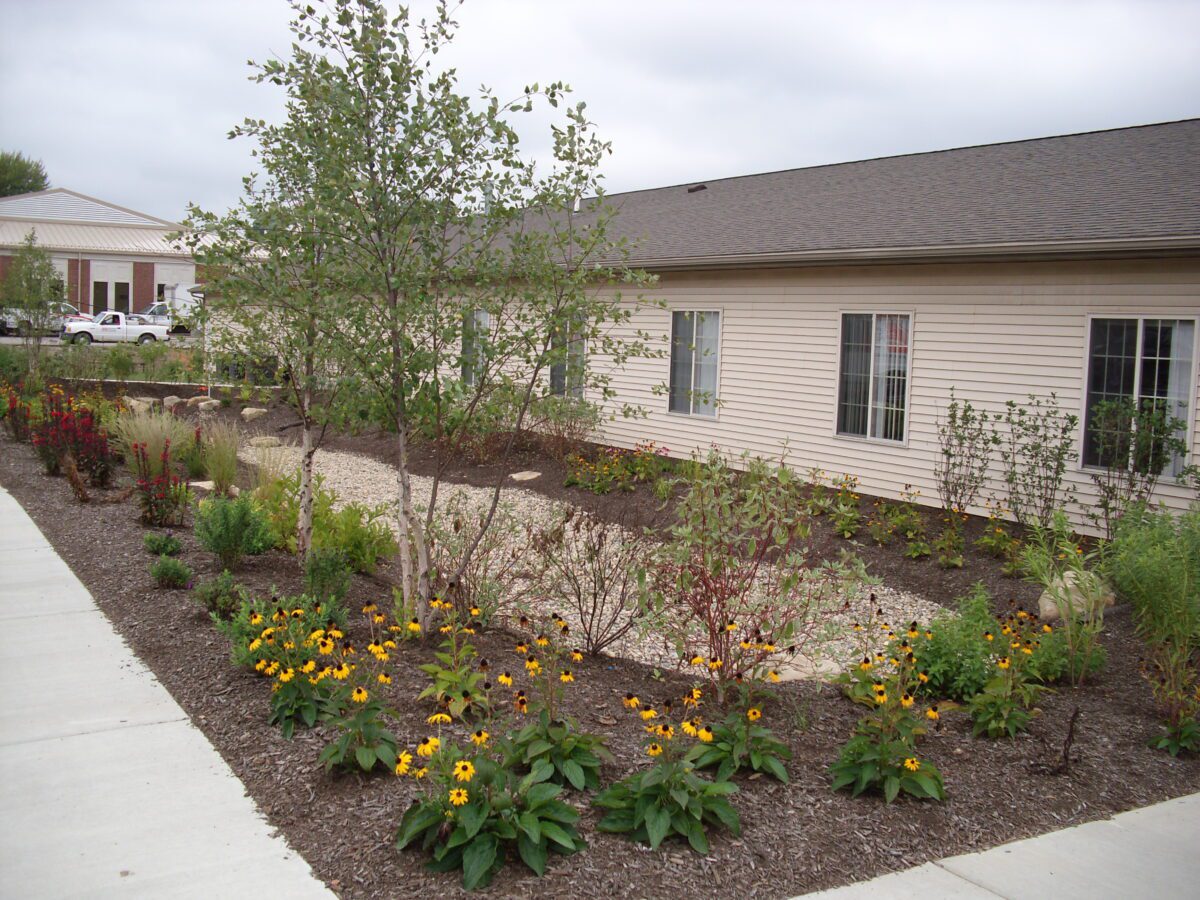A Need For Change
 Traditional development practices cover large areas with impervious surfaces such as roads, driveways and buildings. Once the land is covered, the rainwater cannot infiltrate into the soil. Instead it runs off at much higher levels than before.
Traditional development practices cover large areas with impervious surfaces such as roads, driveways and buildings. Once the land is covered, the rainwater cannot infiltrate into the soil. Instead it runs off at much higher levels than before.
The force of increased stormwater runoff scours streams, erodes banks and causes sediments and other pollutants to enter the waterways. Learn more about local Stormwater Management.
In order to affect change on a large scale, a paradigm shift is needed to modify traditional development practices in order to protect water quality and preserve natural resources. The triple-bottom line approach considers social, ecological and economic factors to create a positive and balanced approach to development and preservation that ensures a sustainable future for all.
A Sustainable Solution
 Green infrastructure is a land and water conservation technique that provides a new approach to stormwater management that is cost effective and sustainable.
Green infrastructure is a land and water conservation technique that provides a new approach to stormwater management that is cost effective and sustainable.
At “LandToLake” one of our primary goals is to increasing public understanding and awareness of Green Infrastructure in the Upper Maumee Watershed and throughout Defiance County.
Green infrastructure techniques utilize natural systems, or engineered systems that mimic natural landscapes to capture, cleanse, and reduce stormwater runoff using plants, soils and microbes on the site where it is generated.
- On the regional scale, it is our natural life support system – an interconnected network of farms, floodplains, forests, waterways, and wetlands; wilderness areas and open spaces that support native species, maintain ecological systems, sustain natural resources and improve water quality while improving the health and quality of life for America’s communities and people.
- On the local scale, green infrastructure consists of site specific practices such as rain gardens, tree planting and porous pavements, and nonstructural practices such as protection of existing natural infrastructure through regulations and land use planning

Benefits of Conservation
Implementing Green Infrastructure practices provides a vast array of benefits. Benefits will vary based on individual site conditions and local environment, and can include:
- Increased Land Values
- Increased Carbon Sequestration
- Ground Water Recharge
- Erosion & Sediment Control
- Open Space Amenities
- Increased Wildlife Habitats & Beneficial Pollinators
- Reduced Potential Flooding
- Reduced Water & Air Pollution
- Reduced Urban Heat Island Effect
- Reduced Sewer Overflow Events
- Reduced Hard/Grey Infrastructure Costs
- Reduced or Delayed Peak Runoff Volume
Go to Public Projects to learn more about what our community is doing to promote Green Infrastructure. Go to Make A Difference to learn more about what YOU can do to promote Green Infrastructure! or Contact us! with your questions and comments.

